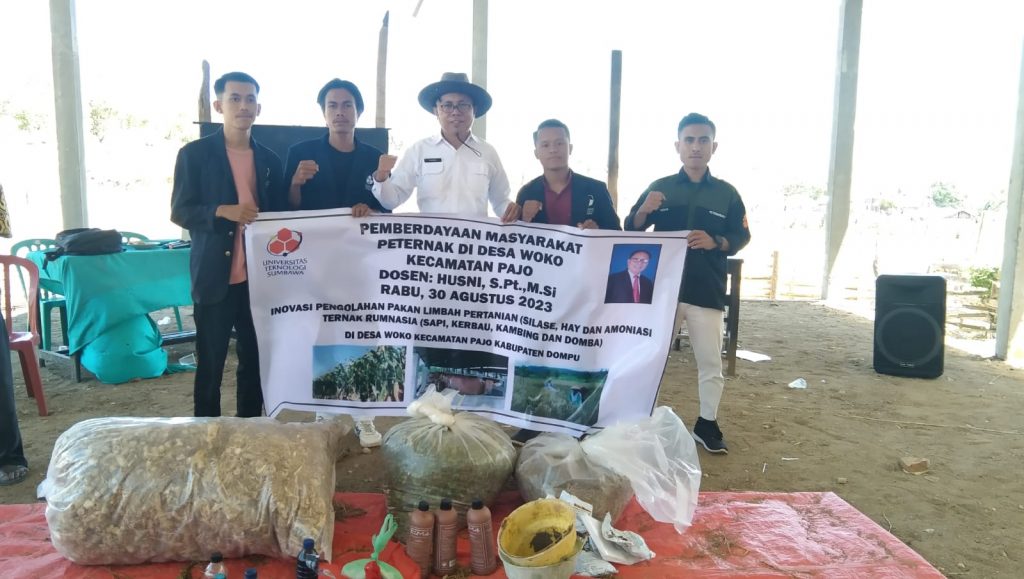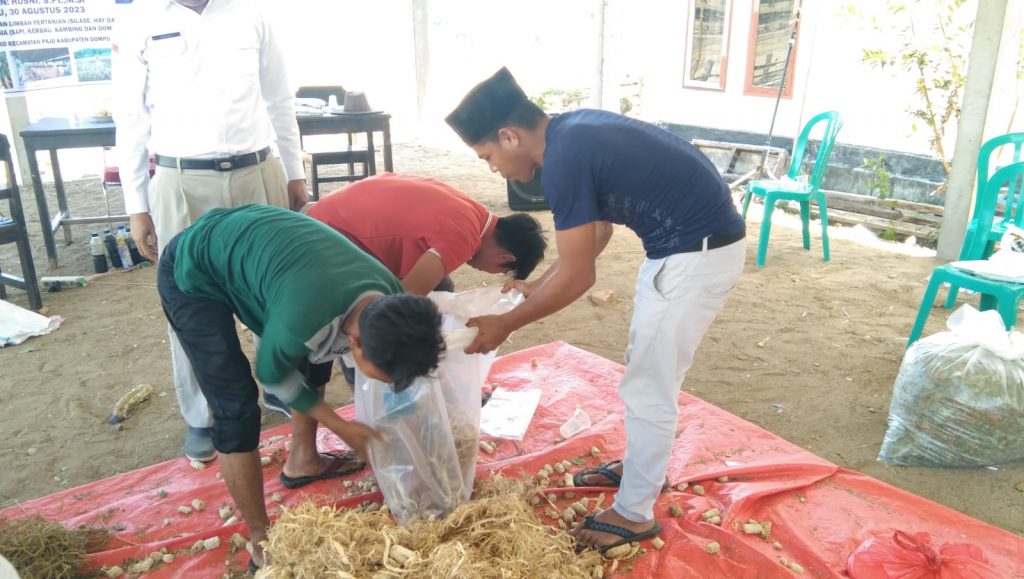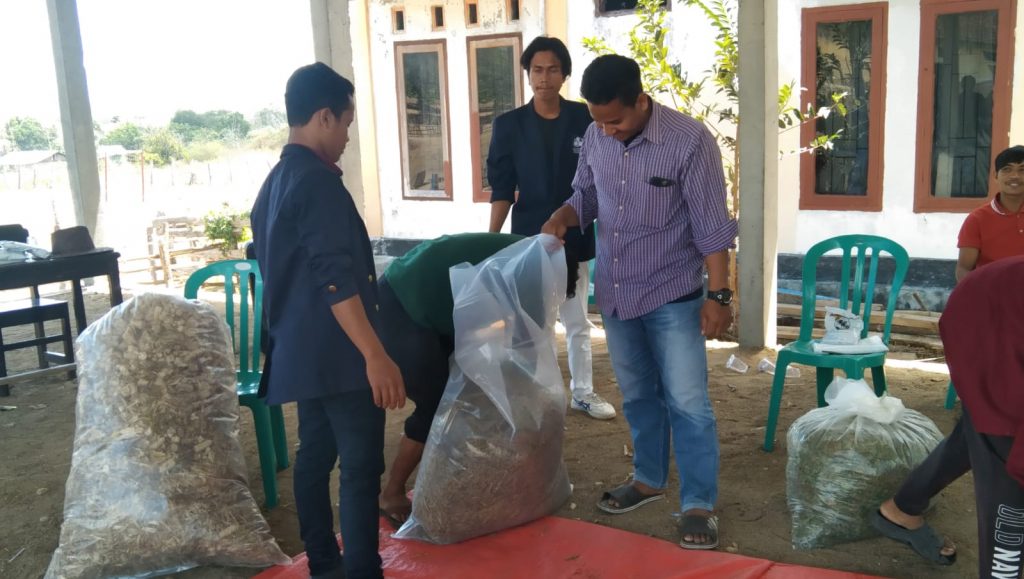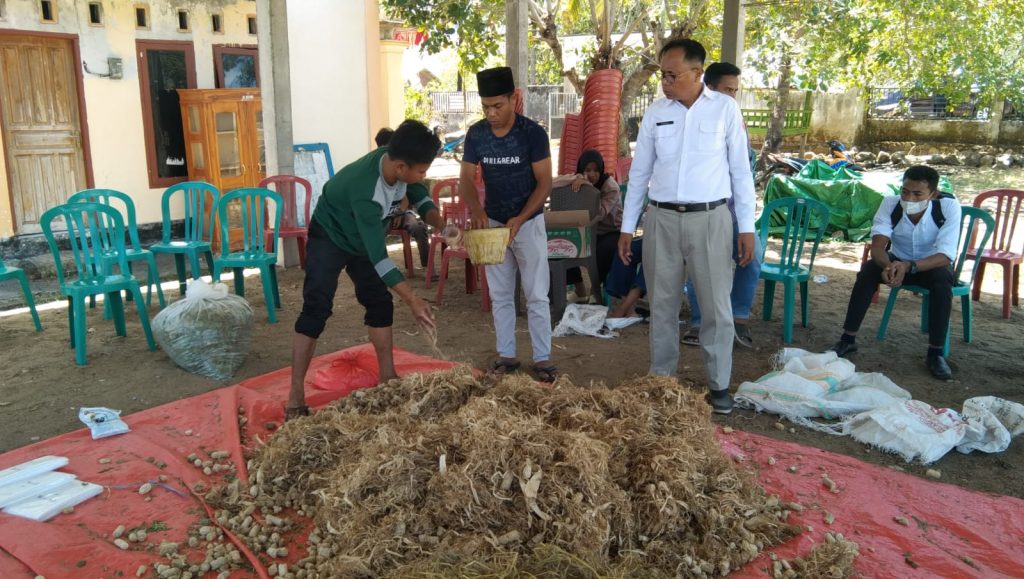Sumbawa (UTS) – Many cattle breeders in Woko Village, Pajo District, Dompu Regency still use animal feed from green plants and agricultural residues, making it difficult for them to get animal feed during the dry season. Therefore, the training team, lecturer service, UTS Animal Husbandry Study Program students and lecturer Husni, S.Pt., M.Si from the Animal Husbandry Study Program, Faculty of Life Sciences and Technology, Sumbawa University of Technology held community service with animal feed materials to overcome this problem. (Wednesday, August 30 2023)
The productivity of cattle in the Dompu region which has a dry climate by looking at various rearing systems is the Dompu Bima language release system is So. The aim of holding silage and ammonia feed processing training is to provide quality animal feed in the dry season by utilizing excess animal feed in the rainy season or dry season. harvest to increase the cattle population. This activity really helps livestock groups to try innovation and feed processing. This is due to the need for feed to support the livestock business. Utilizing waste is the right way to overcome the current difficulties and high prices of feed. There are various kinds of waste that can be used as animal feed and one of them that we present to socialize to livestock groups is by making silage from agricultural waste.
By looking at the production of corn and rice in Dompu Regency, it is very abundant. However, reality shows the opposite condition. Farmers are still burning remaining corn and rice crops while large numbers of cows wander around looking for food with emaciated bodies. One thing that must be done is the use of Ammoniated Straw. Of course, preventing food shortages, especially during the dry season, so that livestock do not lack food. Livestock productivity will increase, with rice straw ammonia, digestibility will increase, so livestock growth will be better. Ammoniated Straw for Animal Feed. Rice straw is also an agricultural waste containing very low nutrients, namely 4.1% crude protein and 86% cell walls, so that if it is given as a single feed to livestock, it is difficult to meet the livestock’s need for nutrients, even if it is given ad libitum. The following is the processing method assuming 100 KG of straw material. For example, 1 ton of dry rice straw means you need 20-25 liters of molasses/sugar, and 250-300 liters of water to dissolve it.
“Feed is one of the biggest components in the livestock production business, feed alone can reach 70% of the total production costs, so feed is a determinant of the success of breeders, in addition to seed factors and cultivation management. “Good feed management will be the key to the success of a farm, this includes feed procurement and feed banks, feed formulation, and feed management technology as well as processing silage and ammoniated feed.” Said Husni, S.Pt., M.Si as Lecturer in the Animal Husbandry Study Program, Faculty of Life Sciences and Technology, Sumbawa University of Technology.






